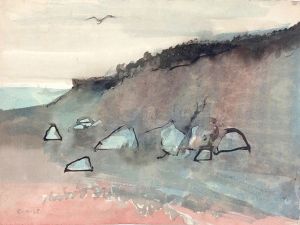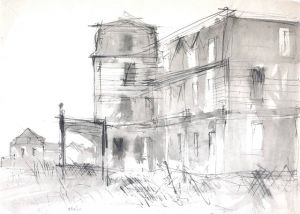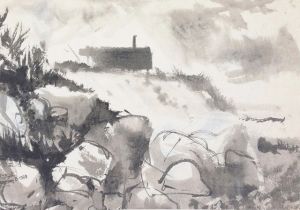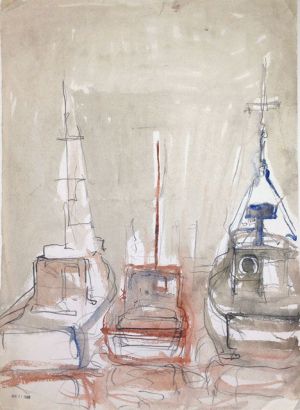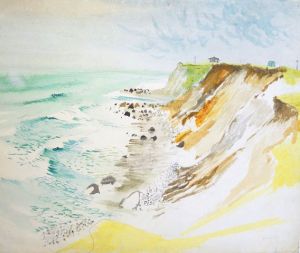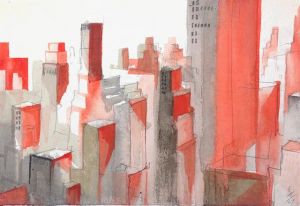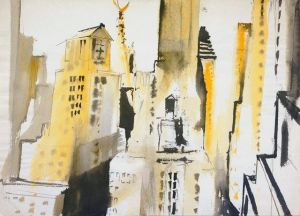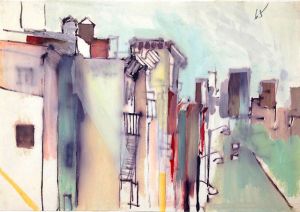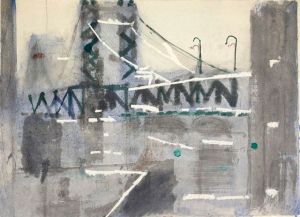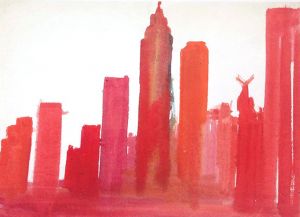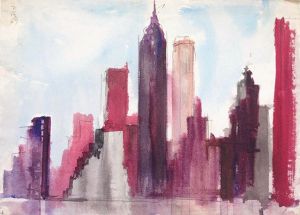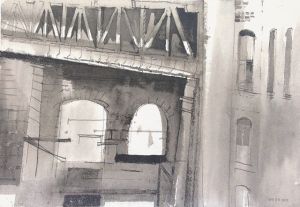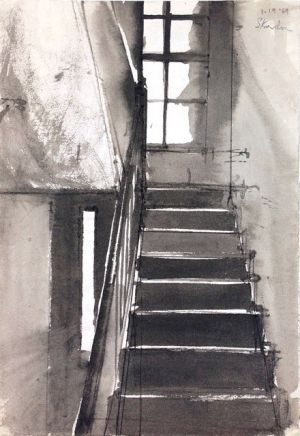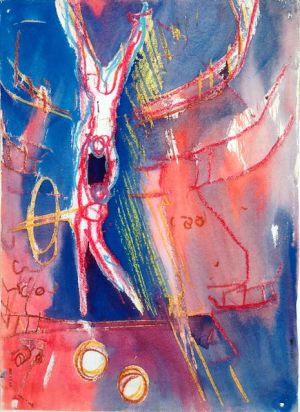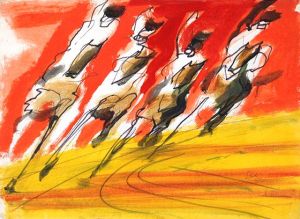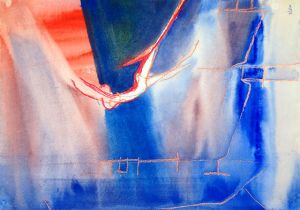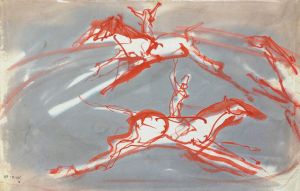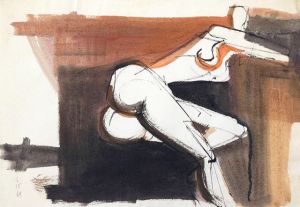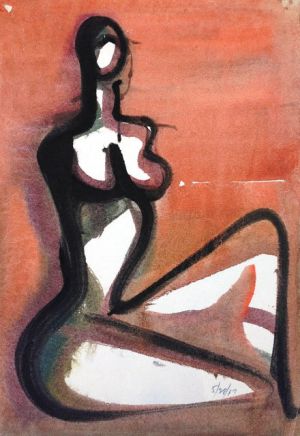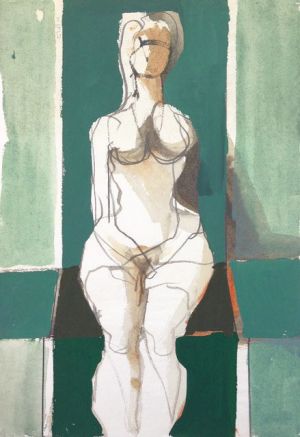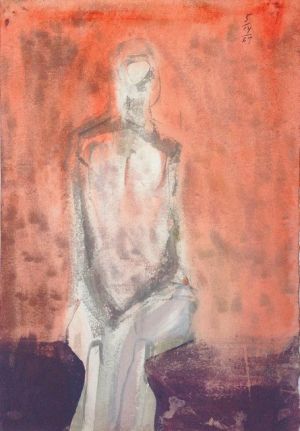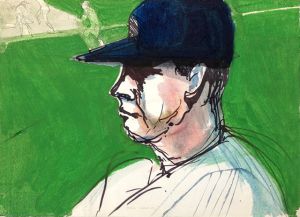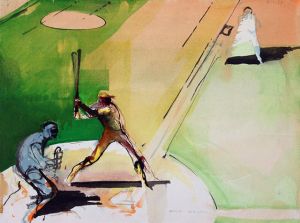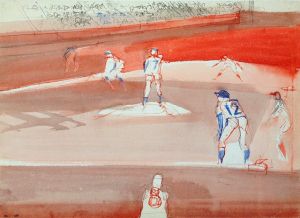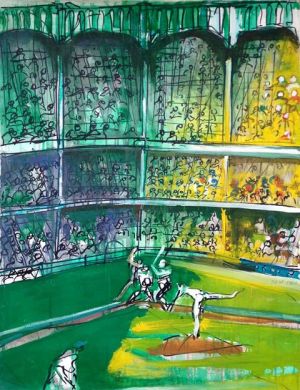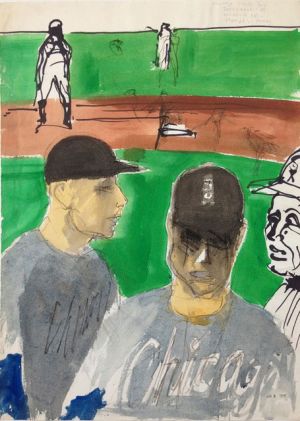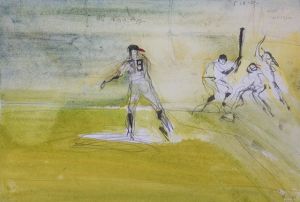After a hiatus of seven years, a new collection of the dynamic works by the late William Skardon will be on exhibit at the Jessie Edwards Studio from August 16-29.
These works in watercolor and ink, gouache, and a mix of media represent a range of Skardon’s enthusiasms rendered in vivid color and bold strokes. They include cityscapes, Block Island landscapes, sports vignettes, circus scenes, and figurative paintings.
Skardon prepared his own ink and mixed his own pigments. In several works here, he used casein to dramatic effect. Casein is a water-based pigment made from a milk protein and valued for its brilliance, permanence, and quality of color and texture.
For example, in one of his baseball scenes, Skardon heightens the tension of Willy Mays at bat poised to swing by placing him against the deep rich casein green of the infield on the left. The same vivid green sets off a profile of Mickey Mantle (wad in cheek) looking crisp in white shirt and deep blue cap. Similarly, the green of infield and outfield is a perfect foil for a close-up of an awkward conference at the pitcher’s mound with the Chicago White Sox catcher, manager, and pitcher. And again, in a large view of Yankee Stadium, the left infield and stands are cast in deep, cool green in contrast to warm yellow sunlight on the right. Our attention is drawn to the semi-abstract white figures in the center of all this color: they are caught in that moment when the batter is about to connect with the ball and the pitcher’s leg is sill extended in arabesque.
The casein green is used differently in one of four nudes. The opulent curves of a seated nude are set off in muted and varied tones. The other three nudes are watercolors, but two of the figures are outlined in sumi ink and set against bands of backgrounds of black and brown color in one and soft tones of grey and orange in another.
Manhattan’s buildings and bridges were favorite Skardon subjects, and he painted them daily in all their changing aspects, especially from his vantage point in lower Manhattan, where he lived near the Manhattan Bridge. Many of these scenes look north to the tall towers of mid-town that cluster near the Chrysler Building on Lexington Avenue and 42nd Street. One is a study in yellow, white, grey, and black that emphasizes the light and shadows cast by the varied heights and angles of the structures. Another is a profile of the skyline in myriad shades of orange, red, and purple. Another gives more shape and definition to the same skyline with columns of grey, black, garnet, and purple against a pale sky. There is an art deco feel to another, with angles and planes of white and orange.
In contrast to all this vivid color, the Manhattan Bridge and the East River shimmer in tones of black, grey, white, and spots of blue. Dark bands of sumi ink define the structure of the bridge while delicate white lines highlight suspension wires and ripples of water. Several Block Island scenes have a similar muted quality and delicacy of line. Fishing boats tied up at a dock are subtle blocks of white with their rigging traced in delicate lines of color. They bob in their watery reflections in a hazy ochre background.
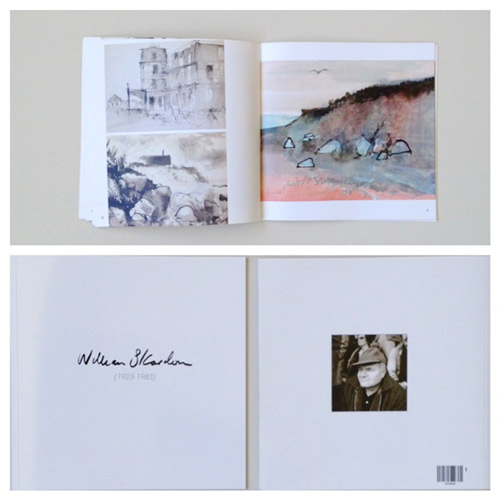 In sumi ink, the derelict Highland House is a phantom of its former presence. A watercolor and ink depicts the solitude of a beach in pale pink light with blue shadows on the boulders at the foot of the bluffs with an overcast sky. Another scene shows the bluffs in warmer tones of yellow, green, orange, and brown with a frothy white and blue surf swirling against the rocks.
In sumi ink, the derelict Highland House is a phantom of its former presence. A watercolor and ink depicts the solitude of a beach in pale pink light with blue shadows on the boulders at the foot of the bluffs with an overcast sky. Another scene shows the bluffs in warmer tones of yellow, green, orange, and brown with a frothy white and blue surf swirling against the rocks.
The circus scenes are dazzling in their spontaneity and action. Bareback riders swirl around a ring, briiiight red and white flashes against a dark background. An elegant Lipezaner horse and rider high step through their paces against bright red and blue background. A trapeze artist dangles in mid-flight in a shower of light against the red and blue background.
Moving from the circus ring to the race track, Skardon gives us a watercolor and ink frontal view of four horses rounding a turn heading to the finish line. It is full of sheer energy, motion, and color as the jockeys raise their crops and the horses lean into the turn—streaks of light against the red and yellow backgrounds.
A color catalogue of the works in this exhibit is available at the gallery and on-line.

